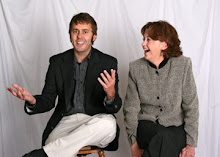
As much as we at Ertel Publishing look to the future, we love the past. In fact, all of the publications we design are historical in nature. This is not the result of some plan; instead, it has all happened quite organically, and we couldn’t be more pleased.
Beginning this year, Ertel Publishing started to design yet another historical publication--Ohio Valley History. This quarterly journal is published cooperatively by the Cincinnati Museum Center, the Filson Historical Society of Louisville, and the University of Cincinnati. Below is a discussion with Ruby Rogers, the Director of the Cincinnati Museum Center’s Library and one of the Managing Editors for Ohio Valley History.
Ertel Publishing: For how many years has Ohio Valley History been in publication?
Ruby Rogers: OVH began in 2001 as a partnership between the Cincinnati Museum Center and the University Of Cincinnati’s Department Of History. OVH replaced Queen City Heritage, which was published from 1983 to 1999.
What is the mission statement of the journal?
OVH is committed to publishing the best scholarship on the history and culture of the Ohio Valley and the Upper South from the 16th through the 21st centuries.
Overall, what has the response been to the journal?
The response has been very positive. After just eight years, OVH is the largest regional history journal in the country. With a subscription list of just about 7,500, OVH has more subscribers than the nation’s two other regional history journals combined.
How did the Cincinnati Museum Center end up working with the Filson Historical Society and the University of Cincinnati?
The initial partnership was the Museum Center and UC. In 2002, the Filson Historical Society approached us about a potential partnership that would ensure publication of four issues each year. Before the partnership with Filson, the Museum Center published three issues in 2001 and two issues in 2002.
How difficult is it to manage a publication that is essentially produced at three different locations?
Good communication is key. I don’t think we could manage without email. Each partner handles specific tasks and it all comes together.
What is something interesting or unique you have learned about the Ohio Valley since working on the journal?
Throughout the nine years of OVH, we have published several articles that compare Cincinnati and Louisville in terms of commerce, religion, slavery, politics, etc. I enjoy learning what the two cities have in common, but also how they differ.
Do you have a favorite article that has been published in the journal? And if so, what was it about?
For the 70th anniversary of the 1937 flood, we published a joint photo essay with images from Cincinnati and Louisville. I loved the result that clearly demonstrated the damage and havoc created by the Ohio River.
Why should people learn more about the Ohio Valley?
The Ohio Valley has played an important role in the history of the United States since the American Revolution. The better we understand how the region developed, the better prepared we are to deal with the present and prepare for the future.
